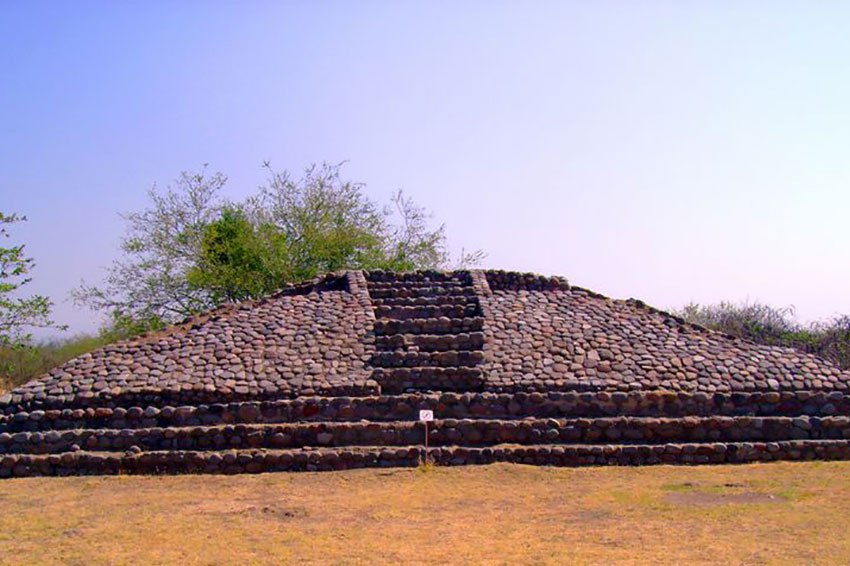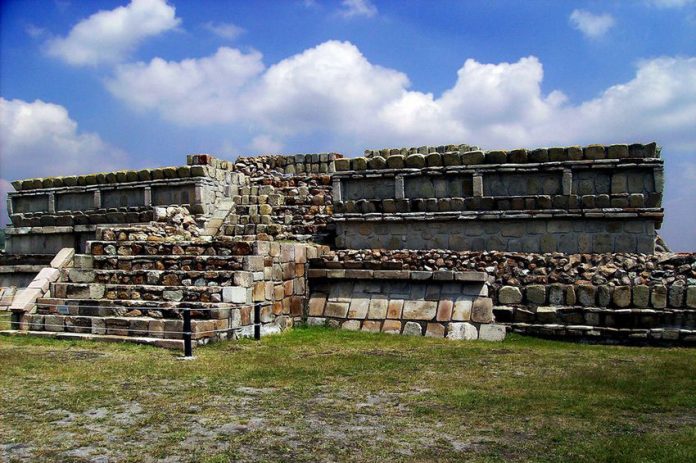A new book — written in excellent English — presents the first study of the archaeology of the whole of western Mexico, from the earliest to the latest cultural periods, by a single author.
It is also unique in that it is far more than a simple compendium of excavations and artifacts. Guadalajara-born archaeologist Eduardo Williams, who is now a professor at the Colegio de Michocán, tells us this up front in the book’s title: Ancient West Mexico in the Mesoamerican Ecumene.
His choice of the word ecumene (pronounced ee-CUE-me-nee) is significant. This expression which, to the Greeks meant the known, inhabited world, here refers to the community or civilization of Mesoamerica in a holistic sense: including its social, cultural and economic aspects.
Williams told me he decided to use this word in honor of his colleague archaeologist Phil Weigand (1937-2011) who worked tirelessly to promote the idea that archaeology must be dedicated to more than cataloguing potsherds and figurines.
The book, published this year by Archaeopress Publishing Ltd. of Oxford in, is 441 pages long and has over 320 illustrations. It first presents a history of the archaeological research carried out in western Mexico between 1880 and 1990, with special emphasis on Michoacán, Jalisco, Colima, Nayarit and Sinaloa. In these pages, Williams presents the work carried out by dozens of researchers in a huge number of papers, wherever necessary updating the information.

This means that anyone interested in the archaeology of western Mexico will find everything they need at their fingertips, in one volume. For this alone, I would say that Williams deserves a great round of applause!
In the second half of the book, Williams focuses on the people who lived in the region from the Formative Period (starting in 1500 BC) through to the end of the Classic Period (900 AD). He looks at their beliefs, their culture, their economy, their relations among themselves and with their neighbors in central Mexico. This is indeed an ecumenical study, which brings to life the people who made those pots and erected those pyramids.
If you are not an archaeologist or anthropologist, but simply curious about the ancient history of western Mexico, you will probably see Eduardo Williams’ book as a treasure chest full of wonderful places to visit. For example, you’ll learn about the huge complex of ruins at Ixtlán del Río in Nayarit, one of the few sites where archaeologists were able to unearth and study a temple erected to Ehécatl, the Mesoamerican wind god and Quetzalcóatl’s avatar.
You’ll also discover that the famous circular pyramids of the Teuchitlán tradition are found not only in Jalisco, but also in Comala, Colima. And then you’ll read about the ruins of Plazuelas in Guanajuato, a complex site with plazas, mounds, causeways and a major ballgame court, all built between AD 600 and 900. Plazuelas was a busy place in its heyday, trading in turquoise from New Mexico, conch shells from the Caribbean, and jadeite from Guatemala.
Williams tells us that western Mexico is the part of Mesoamerica about which we have the least amount of information, because most fieldwork has been conducted in areas filled with impressive monuments such as the ruins at Teotihuacán, Monte Albán and Chichén Itzá.
“However,” he says, “recent research has revealed that west Mexico was actually a very important player in Mesoamerica’s cultural milieu, though its role is only now beginning to be fully-defined and understood.”

Western Mexico, he points out, is the largest of the areas that make up the Mesoamerican ecumene, and also the most diverse in terms of its natural environments. It includes portions of the Mesa Central (central plateau), the NeoVolcanic Axis, the Mesa del Norte (northern plateau), the western Sierra Madre, and the Pacific Lowlands. It has highlands over 5,000 feet in altitude as well as a coastal plain of tropical lowlands.
What was the relationship of people living in these diverse ecosystems to their cousins in urban centers farther south?
According to Williams, a study of oxygen isotopes in the bone and dental remains of people who lived in Teotihuacán indicated that around one-third of them were immigrants:
“Christine D. White and her colleagues determined that, before coming to Teotihuacán, these people had grown up and lived in places like Michoacán, Yucatán and the Gulf Coast of Mexico. The isotopes of oxygen are different in each of these places. This data, 20 years old, puts people from West Mexico in Teotihuacán.”
What were these people doing in Teotihuacán? Williams suggests we look at the trade routes linking the people of central Mexico to communities far to the north and south. By way of example, he tells us that “Turquoise (and other green stones) had to be imported from far-away lands in northern Mesoamerica (including the present day southwestern United States) and southern Mesoamerica — and turquoise was the most precious material for these people.”
A person from Michoacán who found himself in Teotihuacán may have been interacting with the local people on equal terms, suggests Williams. Rather than a beggar or a poor immigrant, he may have been a major player in the economic system, perhaps an importer of turquoise from Zacatecas or the U.S.A. This point of view, says Williams, “is reinforcing the idea of the ecumene as a universe of interaction.”
[soliloquy id="106630"]
Supporting this perspective is a discovery made in Sinaloa in the 1940s by American archaeologists. “They began to find all kinds of material from the Mixteca-Puebla tradition,” Williams told me. “They asked: what were these people doing way over here?”
Williams suggests a theoretical model that would help us understand this and many other phenomena of interaction among the major cultures of Mesoamerica.
“I’m looking for a possible explanation as to how or why people were going from Cholula (just west of the modern city of Puebla) all the way up to Sinaloa. I think we can use the Silk Road, which linked China and Europe from as far back as the second century BC, as an external model. In addition to silk, jade, metals and other items of interest to the elite, people were exchanging ideas. The spread of a tradition of the Mixteca-Puebla coincides with the spread of an iconography based on Quetzalcóatl.
“Do we understand Quetzalcóatl as a personality? Probably not 100%, but the fact remains that this major symbol, which was the most important deity in Cholula in the Classic and Postclassic periods, appears along this trade route from Cholula to Lake Chapala to Nayarit and to Sinaloa.”
Williams cites British historian Peter Frankopan who, he says, looks upon the Silk Road as a conveyor not only of goods, but also of ideas, from early prehistory all the way to the 21st century. “For the early empires,” says Williams, “the richest part of the world was the East, not the West. The British, the French and the Germans were poor compared to China, India, Pakistan and Persia.
“But trade began to flow from the most remote parts of Asia to Europe and afterwards came the great empires of the British and the French and so on. So I think we can say the same about Mesoamerica: the richest cultures, in terms of architecture and art, for example, were in central Mexico, but it was still important for them to explore the farthest corners of their world.”
Reviewing this book, professor Robert B. Pickering of the University of Tulsa says, “For far too long, west Mexican prehistory has been the poor stepchild of Mesoamerican studies. Eduardo Williams’ book demonstrates the connections between this neglected region and the better known areas of the Mesoamerican world … I think this will be the “go-to” volume for anyone who wants either a broad overview or to compare different regions and developments (e.g. settlement, trade, social organization) through time.”
If all this has whet your appetite, look for Ancient West Mexico in the Mesoamerican Ecumene on Amazon, or save a lot of money by downloading the e-publication version (PDF) from Archaeopress.
The writer has lived near Guadalajara, Jalisco, for more than 30 years and is the author of A Guide to West Mexico’s Guachimontones and Surrounding Area and co-author of Outdoors in Western Mexico. More of his writing can be found on his website.
CORRECTION: The earlier version of this story stated that La Campana, Colima, was the largest pre-Hispanic population center in western Mexico. In fact, it was one of the largest.
